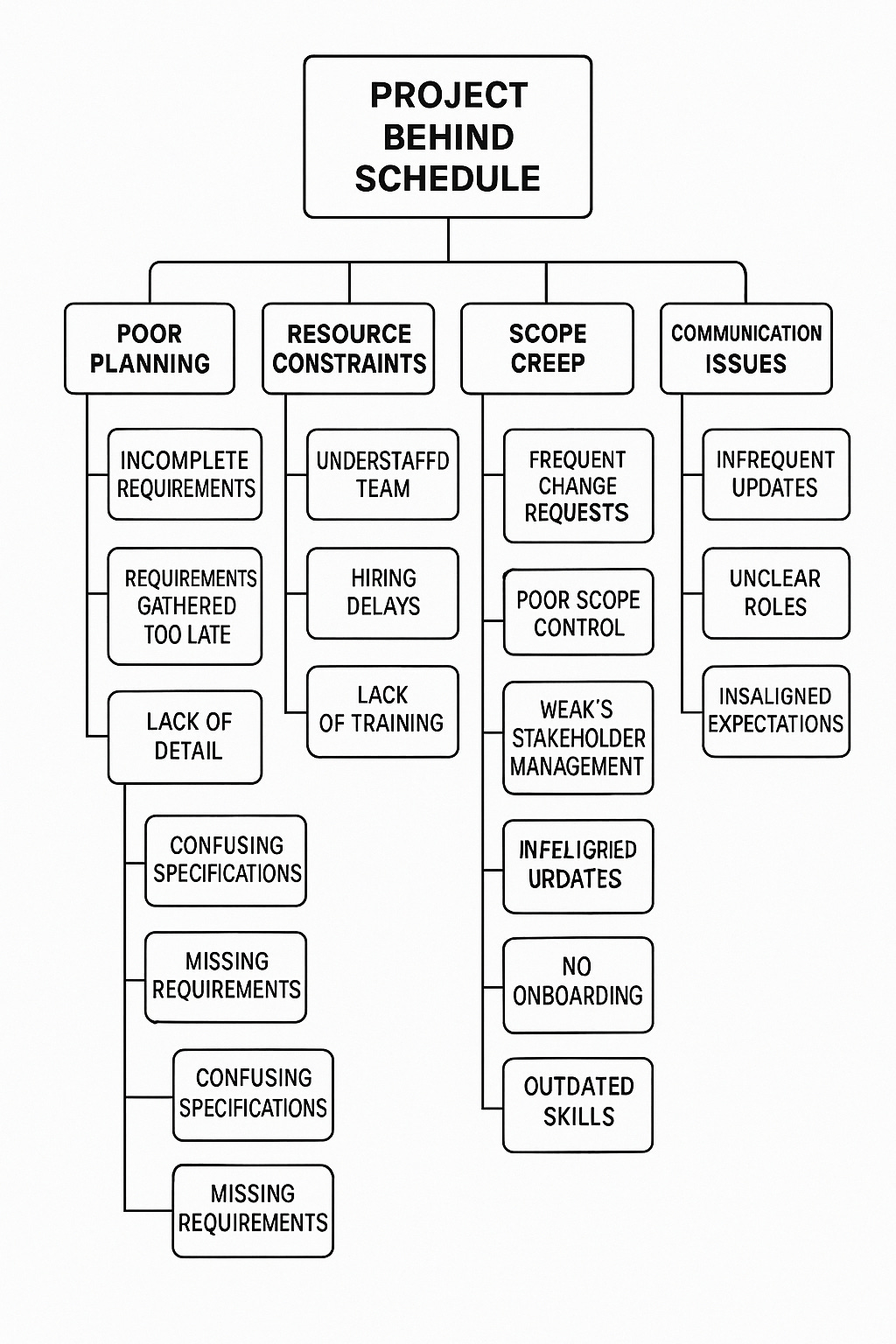Root Cause Analysis
Root cause analysis is a critical skill for any modern knowledge worker. Working in a complex organisation in an even more complex market or operating environment, things go wrong and don’t work out as expected. You’ll need to be able to figure out what went wrong and how to fix it.
In a project environment, there are even more obstacles and potential issues that can arise or need to be addressed. It can be overwhelming to know where to start and what to do.
Root cause analysis is the first step in being ‘figureoutable’. Figureoutable is a skill of skills. Your ability to figure things out, solve the problem, come up with creative solutions and take the next action.
Finding the root cause is finding what caused the problem and the sequence of events that led to the problem. You’ll identify the cause, not only the symptom.
Root Cause Analysis
The first thing to do is to identify the problem. Don’t just give it one word or a brief description. Provide details. Who is impacted? How are they impacted? What are the symptoms? How the problem occurred.
The second step is to analyse and understand the problem. You’ll need to conduct interviews, collect data and research. Collect the data and organise it in a way that can be understood.
Next, it is essential to understand the causes of the problem. Identify as many causes as possible, making sure you dig deeper to understand the underlying causes. This will lead to identifying the root cause(s) of the problem.
The final step is to identify the steps to implement a solution. The main challenge here is to ensure that the solution resolves the root cause and not the symptoms.
Below are some techniques you can use to identify the root cause.
5 Whys
This is a classic technique. It is fairly straightforward. You ask the question ‘Why’ 5 times. The idea is that the first couple of times, the answers are superficial. But as you cut deeper, you start uncovering the root cause.
The success of this technique depends very much on the answers that are given. For each time you ask the question, don’t settle for simple or vague answers. Get the person or persons to explain in detail.
For example, why couldn’t the customer open the account at the branch? The system was down. A better answer would be - the staff portal was down and the staff couldn’t access the product origination form.
As you can see, the second answer was richer and provided an answer that would make the next set of ‘why’ more effective.
And you don’t have to stop at the 5th ‘why’. If you still haven’t found the root cause, keep asking.
Drill Down
This is another simple technique to get to the root cause of a problem. Start with a problem, then write the various points that make up the problem. This could be any information related to it, additional questions you may have, factors or impacts of the problem.
Then, for each of the points you listed, continue to break it down further. You may have to do further investigation or research to break down the points further. This will allow a deeper and comprehensive understanding of the original big problem. It will help link information that you didn’t know were related and identify gaps in your understanding.
Drill-down techniques are usually visualised like the image below.
Another technique to uncover the root cause analysis is the fishbone diagram.
Practice
Take every opportunity you can to practice these skills. Consistent practice will lead to mastery.
The next set of skills within the meta-skill of ‘figureaboutable’ is creative solutions. Next toolkit article will look at this.



